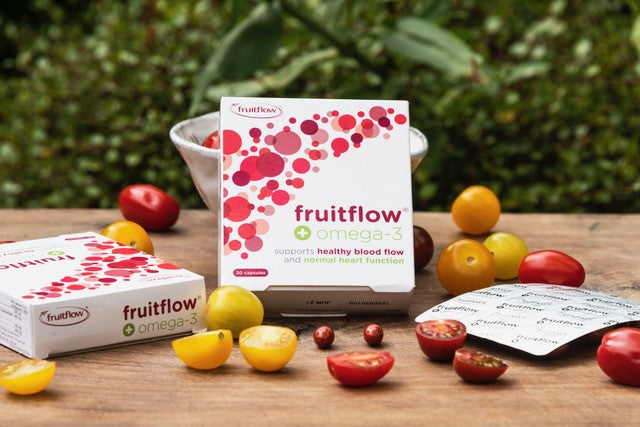Weight gain during menopause: How to keep your heart healthy

We’ve covered how fluctuating oestrogen levels during menopause cause hot flushes and night sweats (see our article dispelling the myths for more info) which is why we developed our Anti-Flush clothing range. But did you know that these levels also affect the consistency of our blood and hence our metabolism and cardiovascular health? We’re excited to introduce Dr Niamh O’Kennedy to write in more detail about why changing hormones leaves us more at risk of heart attacks and stroke and gives us solutions about how we can look after our bodies to protect ourselves.
by Dr Niamh O’Kennedy
Levels of the female hormone oestrogen decline as we go through the menopause, which can have an impact on our health and wellbeing – unless we do something about it.
Our oestrogen levels affect our mood, appetite and energy. They also have a powerful protective impact on our cardiovascular system, keeping women’s risk of cardiovascular disease (CVD) significantly lower than men’s for our first 50–60 years.
But when our natural levels of oestrogen decline during perimenopause, this protective effect is lost. In the space of 5–10 years, our CVD risk rises to equal the risk that men face. This means we’re equally at risk of heart attacks and strokes.
Is there anything we can do to keep the benefits oestrogen provides earlier in life? This blog post covers the important work that oestrogen does in our bodies, what happens as levels decline and finishes with positive action points that we can take to protect our health.
Oestrogen helps us regulate weight
Ever wondered why you gain weight in menopause? Oestrogen regulates metabolism in the female body, organising our energy intake and output. It also works in the brain to help curb our appetite – all working to protect us from weight gain and diabetes.
During perimenopause, many women notice their body shape change – they gain weight around the middle and struggle to shift the weight gained. This is an early sign of falling oestrogen levels and a shift in our metabolism. Many women struggle to control their appetite, notice that it is harder to keep a balanced blood sugar level and suffer changes in their blood cholesterol. Higher cholesterol levels mean an increased risk of cardiovascular disease.
Oestrogen helps our blood vessels do their job
Blood vessels are amazing – they expand when we need more blood to flow through them, and they constrict when we need to conserve blood in the major organs. In women, oestrogen helps to control these changes in the blood vessels when the body needs them by telling the body to release a precious molecule called nitric oxide.
Everybody produces less nitric oxide from the age of 40, which means our blood vessels are not as pliable and not as able to expand when the body needs them to, putting pressure on our cardiovascular system. For women, the fall in oestrogen around menopause makes the situation worse and so ramps the pressure up even more.
What happens to the blood as oestrogen levels decline?
Very few people know that our naturally high oestrogen levels before we reach menopause help to control blood clotting in women – but why is that important?
Well, we have platelets in our blood, which are vital in clotting when we suffer a cut or injury. But, inside the body these platelets can sometimes change from being smooth to being ‘sticky’. They can do this several times a day, as they’re directly affected by our lifestyle; but in a healthy person, they will return to their normal non-sticky state quickly. Our platelets are more likely to be stickier more of the time if, for example, we smoke, have an unhealthy diet, are inactive, stressed or often exercise intensively. This leads to a ‘thickening’ of the blood when sticky platelets stick to each other and to the blood vessels.
Up until menopause, oestrogen helps the body to keep all of this under control. Women even have special oestrogen receptors on their platelets, to stop them becoming too sticky. This is another reason why women have a lower risk of cardiovascular disease than men, until they reach menopause.
During perimenopause, platelet oestrogen receptors reduce in number, and after menopause they disappear. So, with lower levels of nitric oxide, and falling oestrogen levels, our platelets can become persistently sticky after menopause.
The Solution
I recommend that women take Fruitflow® at this time of life as it is a natural and proven way of filling the gap in our natural defences. It works to smooth the blood platelets, and so helps to protect against their stickiness and unwanted blood clots.
What else can I do to protect my cardiovascular health?
- Start early. During perimenopause – around age 40 in most women – is the time to get good diet and lifestyle habits ingrained.
- Exercise is key to keeping a good energy balance, maintaining a healthy metabolism, and keeping natural nitric oxide reserves as high as possible. Remember, it is moderate exercise that’s associated with these benefits – high intensity exercise can be counterproductive, making platelets sticky and causing unnecessary inflammation.
- Know your numbers. Be familiar with your changes to your body, get your blood pressure and cholesterol measured regularly. If your cholesterol starts creeping up, take steps to lower it – changing your fat intake may help, or taking plant stanol esters in some foods.
- Pamper your platelets. No one can reverse all the effects of ageing, but a healthy lifestyle helps to minimise knock-on effects on your platelets. Keeping your platelets from becoming sticky helps prevent disease like atherosclerosis from taking hold. Fruitflow®+ Omega-3 is a natural supplement that is proven to smooth the blood platelets to help maintain healthy blood flow & circulation.
- Keep an eye on your diet. Make sure that half of every meal is made up of vegetables, and that your fibre intake is adequate. Check that you get enough B vitamins like folic acid – and you may need vitamin D and selenium supplements too.
For added support during hot flushes, feel free to browse our range of anti-flush menopause clothing — designed to keep you cool and dry when your oestrogen levels fluctuate.
Guest post by Dr Niamh O’Kennedy. Chief Scientific Officer – Provexis plc & researcher in cardiovascular diseases. Visit www.fruitflowplus.com to find out more about Fruitflow.
More Posts
-
Embracing Mindfulne...
Entering (peri) menopause brings with it a host of physical, emotional, and mental changes. From dealing with hot flashes to mood swing...
Read More -
Become Featured on ...
We're thrilled that our Anti-Flush clothing was featured on The Quality Edit in their 'Add To Cart' column is a rundown of our their style edito...
Read More -
Managing Your Weigh...
Are you struggling to manage your weight during menopause? If so, you're not alone. Many women find themselves frustrated by bodily changes and pos...
Read More







Comments
0 Comments
Leave a Comment